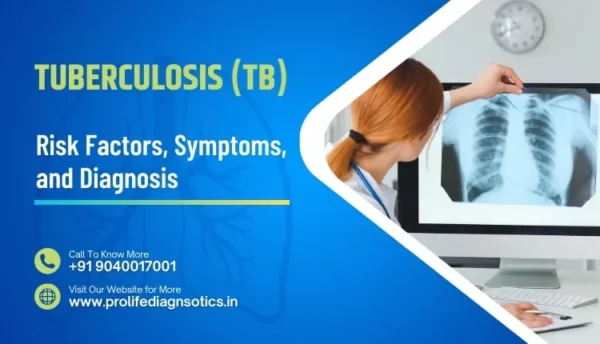Tuberculosis (TB) is a contagious bacterial infection that primarily affects the lungs but can also target other parts of the body. Understanding the risk factors, symptoms, and diagnosis methods for TB is crucial for timely detection and treatment.
Risk Factors for Tuberculosis:
- Close Contact: People in close contact with TB-infected individuals are at higher risk.
- Weakened Immune System: Conditions like HIV/AIDS, diabetes, and certain cancers weaken the immune system, increasing susceptibility to TB.
- Age: Older adults and young children are more vulnerable to TB infection.
- Overcrowded Living Conditions: Congested living spaces facilitate the spread of TB bacteria.
- Substance Abuse: Alcohol or drug abuse can weaken the immune system, making individuals more susceptible to TB.
- Healthcare Workers: Those working in healthcare settings are at increased risk due to exposure to TB-infected patients.
- Poor Nutrition: Malnutrition compromises the immune system, elevating the risk of TB infection.
- Travel: Traveling to areas with high TB prevalence increases the risk of exposure to the bacteria.
Symptoms of Tuberculosis:
- Persistent Cough: A cough lasting more than three weeks, sometimes with blood in sputum.
- Fatigue and Weakness: Generalized weakness and fatigue are common symptoms of TB.
- Fever and Chills: Low-grade fever and chills, especially during the evening, may indicate TB infection.
- Night Sweats: Profuse sweating, particularly at night, is a symptom of TB.
- Loss of Appetite: Significant weight loss due to loss of appetite is observed in TB patients.
- Chest Pain: Pain or discomfort in the chest, especially while breathing or coughing.
- Shortness of Breath: Difficulty in breathing, especially during physical exertion or lying down.
- Swollen Lymph Nodes: Enlarged lymph nodes, especially in the neck, indicate TB infection.
Methods for Diagnosing Tuberculosis:
- Tuberculin Skin Test (TST): A small amount of TB protein is injected under the skin, and a reaction is observed after 48-72 hours.
- Interferon-Gamma Release Assays (IGRAs): Blood tests that detect the release of interferon-gamma by immune cells in response to TB infection.
- Chest X-ray: Imaging test to detect abnormalities in the lungs suggestive of TB infection.
- Sputum Culture: Microscopic examination of sputum samples to identify TB bacteria.
- Molecular Testing: Polymerase Chain Reaction (PCR) tests to detect TB DNA in sputum or other bodily fluids.
- Chest CT Scan: Detailed imaging to visualize lung abnormalities and assess the extent of TB infection.
- Bronchoscopy: Procedure to obtain lung tissue or fluid samples for TB culture and testing.
- Biopsy: Surgical removal and analysis of tissue samples from affected organs for TB detection.
Early diagnosis and treatment are crucial for managing TB effectively and preventing its spread to others. If you experience any symptoms suggestive of TB or belong to a high-risk group, consult a healthcare professional promptly for evaluation and testing.
By understanding the risk factors, recognizing the symptoms, and undergoing appropriate diagnostic tests, individuals can take proactive steps towards managing TB and safeguarding their health.
Remember, early detection saves lives. Stay informed, stay healthy!
People who viewed this page also read these blogs…
 A Comprehensive Guide to Understanding Blood Tests
A Comprehensive Guide to Understanding Blood Tests
 What medical conditions might require an MRI scan?
What medical conditions might require an MRI scan?
 The Role of Diagnostics in Women’s Health: Essential Tests and Screenings
The Role of Diagnostics in Women’s Health: Essential Tests and Screenings
 Why Prolife Diagnostics is the Best Diagnostics Centre in Bhubaneswar
Why Prolife Diagnostics is the Best Diagnostics Centre in Bhubaneswar




